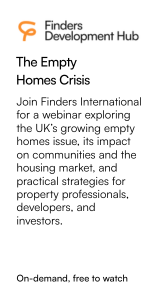The meaning of 'anti-social behaviour'
- Details
The Court of Appeal has clarified the meaning of ‘antisocial behaviour’ for the purposes of Anti-Social Behaviour, Crime and Policing Act 2014. Sian McGibbon examines the ruling.
In Swindon Borough Council v Abrook (Rev1) [2024] EWCA Civ 230 the Respondent, Mr Abrook, was a ‘persistent beggar’ in the Swindon area. He was not homeless but "gave the impression to the public that he was". He was addicted to drugs, and his antisocial behaviour including his begging was directly driven by his drug addiction. The Appellant, Swindon Borough Council, had obtained a series of orders under Part 1 of Anti-social Behaviour, Crime and Policing Act 2014 (‘the Act’) which prevented the Respondent from begging, sleeping or sitting on the street, and verbally abusing passers by, among other related activities. Several of these orders were subject to a power of arrest. On a number of occasions, the Respondent was found to have breached the orders and had been committed for contempt of court. In particular he had been committed for breach of an order made on 11 April 2022 (referred to by the Court as ‘order 5’, being the fifth such order granted against Mr Abrook). The Respondent admitted begging in breach of ‘order 5’ on four occasions between January and March 2023.
An adjourned hearing which had been listed to deal with sentencing came before District Judge Hatvany. Though Mr Abrook had not appealed or applied to discharge ‘order 5’, the District Judge discharged the order of his own motion. The Judge found that Mr Abrook had engaged in ‘passive’ rather than ‘aggressive’ begging and that as such his behaviour was not ‘antisocial’ for the purposes of Part I of the Act: “per se, as long as it is not aggressive, it is not conduct likely to cause harassment alarm or distress, and is not anti-social behaviour, and that actually this form of begging is a feature of urban life”. The Judge also concluded that the county court was not an appropriate forum for dealing with this particular type of anti-social behaviour “because if there is a breach because Mr Abrook goes out and begs, as he will do, to fund his drug addiction, I cannot see that that breach would reach the custody threshold”. On this basis the judge discharged ‘order 5’ of his own motion. The Judge granted permission to appeal on four procedural grounds in addition to one ‘issue of principle’ as to the scope of antisocial behaviour, and ordered that the appeal be transferred to the Court of Appeal to provide guidance of the application of Part 1 of the Act to ‘begging’.
The Court of Appeal unanimously allowed the appeal on all grounds, with the lead judgment given by Elisabeth Laing LJ. On the ‘issue of principle’ she held that ‘anti-social behaviour’ under the Act does not capture trivial conduct and in a non-housing context captures conduct which is different from and more serious than conduct capable of causing nuisance and annoyance (§104-105). The touchstone is whether the behaviour has caused or is likely to cause ‘harassment, alarm, or distress’, and there must be a direct causal connection (as distinction from only a contributory causal connection) between the behaviour and the effect (§106). The distinction between ‘passive’ and ‘aggressive’ begging was not a useful gloss on the statutory test (§108). A court considering an application for an injunction must consider not only whether the behaviour is ‘anti-social’ within the meaning of section 2 of the Act, and whether it is just and convenient to make an order for the purpose of preventing the behaviour. This latter assessment will entail consideration of whether the behaviour is serious enough to warrant intervention of the court, even where it meets the threshold for anti-social behaviour, and also whether it might be better to impose a positive requirement rather than a restraint on conduct (at §109).
The Court also gave two obiter warnings regarding the conduct of applications under Part 1 of the Act. First, it noted that a power of arrest should not be attached a as matter of course but only where the behaviour consists of or includes ‘the use or threatened use of violence against other persons or there is a significant risk of harm’ as required by section 4(1) of the Act, and doubted whether that test had been met on each occasion when a power of arrest had been granted in the proceedings against Mr Abrook (§69, 110). Second, it noted that the county courts should carefully police restrictions on the making of applications without notice, and should require applicant to ‘articulate good reasons’ for departing from the statutory notice requirements. Elisabeth Laing LJ again doubted whether the applications made without notice against Mr Abrook had been supported by ‘evidence of an exceptional case in which such an application was necessary to prevent serious harm to any victim’ (§111).
Siân McGibbon is a barrister at Landmark Chambers.
























